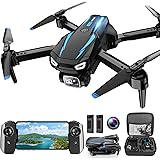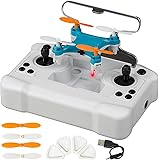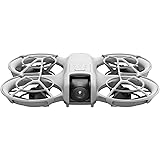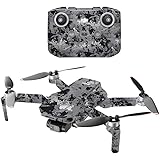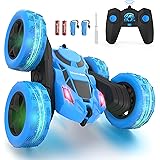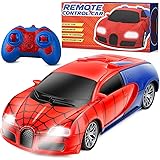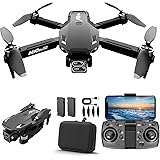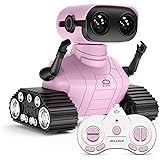The exhilarating world of unmanned aerial vehicles is becoming increasingly accessible, as demonstrated by the accompanying video, which visually captures the intricate process of building a 3D printed mini drone. This hands-on approach allows enthusiasts to delve into both additive manufacturing and electronics, creating a personalized flying machine. The construction of a DIY drone is a rewarding endeavor, combining creative design with practical engineering skills. It is an excellent way for hobbyists to understand the fundamental principles of flight and modern technology.
Why Embark on a DIY 3D Printed Mini Drone Project?
Undertaking the construction of a 3D printed mini drone offers numerous advantages over purchasing a pre-built model. Significant cost savings are frequently realized, with many hobbyists reporting reductions of 30-50% on project expenses by sourcing parts and printing frames themselves. This cost-effectiveness allows for greater experimentation and learning without a substantial financial commitment. The ability to customize every aspect of the drone, from its frame geometry to its performance characteristics, is also a major draw.
The educational value derived from building a DIY drone cannot be overstated. Fundamental concepts in electronics, aerodynamics, and programming are actively engaged throughout the assembly process. Insights into motor mechanics, flight controller logic, and power distribution are naturally acquired. Furthermore, the 3D printing industry has experienced remarkable growth, with market valuations consistently rising, indicating a broader trend towards personalized manufacturing and design. Embracing this technology for drone building places makers at the forefront of innovation.
Essential Components for Your 3D Printed Quadcopter
The successful construction of a custom 3D printed mini drone relies on a selection of specialized parts, each performing a vital function. A deep understanding of these components is crucial for successful assembly and flight. These core elements work in harmony to bring the drone to life, from its structural integrity to its aerial maneuvers. Careful selection ensures optimal performance and durability for the finished product.
The Custom 3D Printed Drone Frame
The frame serves as the skeletal structure for the entire drone, housing all other components securely. With 3D printing, a custom design perfectly tailored to specific requirements, such as size or motor configuration, can be produced. Materials like PLA, PETG, or TPU are commonly utilized, each offering distinct properties regarding strength and flexibility. For instance, TPU is often favored for its impact resistance, protecting sensitive electronics during unexpected landings.
Motors and Electronic Speed Controllers (ESCs)
Brushless motors are predominantly chosen for mini drones due to their high power-to-weight ratio and efficiency, frequently achieving up to 90% energy conversion. Four such motors are typically required for a quadcopter, each paired with an Electronic Speed Controller (ESC). ESCs are responsible for translating the flight controller’s signals into precise motor rotations, governing the drone’s speed and direction. These components are critical for stable and responsive flight control.
The Flight Controller (FC) Board
Regarded as the brain of the drone, the flight controller processes commands from the remote control and sensor data, then adjusts motor speeds to maintain stability and execute maneuvers. Modern flight controllers often integrate gyroscopes and accelerometers, providing vital data for orientation and level flight. Advanced models can include barometer and GPS modules, enhancing flight capabilities such as altitude hold and autonomous navigation. The careful calibration of this board is paramount.
Battery, Propellers, and Remote Control System
Lithium Polymer (LiPo) batteries are the standard power source for mini drones, chosen for their high energy density, typically providing 5-10 minutes of flight time depending on capacity and drone weight. Propellers, matched to motor size and thrust requirements, generate the necessary lift for flight. Finally, a radio transmitter and receiver system establish the crucial communication link between the pilot and the drone. A secure and reliable connection is absolutely essential for safe operation.
Getting Started with 3D Printing Drone Parts
The journey to building a 3D printed mini drone begins with careful planning and the selection of appropriate materials. The design phase is where customization truly comes into its own, allowing for unique frame geometries. Many open-source designs are readily available online, providing excellent starting points for beginners. These can be modified or printed as-is, offering flexibility in design choices.
Choosing the correct filament material is pivotal for the durability and performance of the drone frame. PLA (Polylactic Acid) is a popular choice for its ease of printing and rigidity, suitable for beginner projects. PETG (Polyethylene Terephthalate Glycol) offers improved strength and temperature resistance, making it more resilient. TPU (Thermoplastic Polyurethane) provides exceptional flexibility and impact absorption, ideal for protecting delicate components in a crash. Each material has specific printing requirements that should be followed for best results.
Assembling Your Mini Drone: A Detailed Guide
Once all the components are prepared, the assembly process commences, a methodical sequence of steps that transforms individual parts into a functional flying machine. This stage often mirrors the actions observed in the accompanying video, bringing the conceptual design to physical reality. Attention to detail during assembly significantly impacts the drone’s stability and longevity. Proper technique and careful handling of components are highly recommended.
Mounting the Motors and ESCs
First, the brushless motors are securely attached to the 3D printed frame arms, often using small screws. Following this, each ESC is connected to its respective motor. This usually involves soldering the three motor wires to the ESC, a process that requires a steady hand and proper soldering technique. The ESCs are then typically mounted onto the frame, often using double-sided tape or zip ties, ensuring they are positioned away from the propellers. Correct orientation is important for proper signal transmission.
Integrating the Flight Controller and Wiring
The flight controller is carefully positioned and mounted onto the center of the drone frame, often with vibration-dampening standoffs. All ESCs are then wired to the flight controller, supplying power and signal. The battery connector is also connected to the power distribution board or directly to the flight controller, depending on the setup. This wiring is critical for the drone’s electrical system, and proper insulation is necessary to prevent short circuits. Each connection is meticulously checked for continuity.
Final Assembly and Propeller Attachment
The radio receiver is connected to the flight controller, ensuring it receives commands from the remote control. Any remaining components, such as FPV (First Person View) cameras or buzzers, are also integrated at this stage. Finally, the propellers are attached to the motor shafts. It is essential to ensure that propellers are installed in the correct rotational direction on each motor; incorrect installation will prevent the drone from lifting off or flying stably. A thorough final inspection is conducted before any power is applied.
First Flight and Beyond: Operating Your DIY Drone
After the physical assembly is complete, the drone must be calibrated and configured using specialized software, usually connected via USB to a computer. This software allows for precise tuning of flight parameters, ensuring stable and responsive control. The flight controller’s sensors are calibrated, and motor directions are verified during this stage. Each setting plays a role in how the drone performs in the air.
Safety is paramount during the initial test flights and subsequent operation. A large, open space, free from obstacles and people, is the ideal environment for practicing. Basic maneuvers, such as gentle take-offs, hovering, and controlled landings, should be mastered before attempting more complex aerial movements. Understanding local drone regulations and airspace restrictions is also a critical responsibility for all pilots. The thrill of flying a drone that has been personally constructed is an unparalleled experience.


